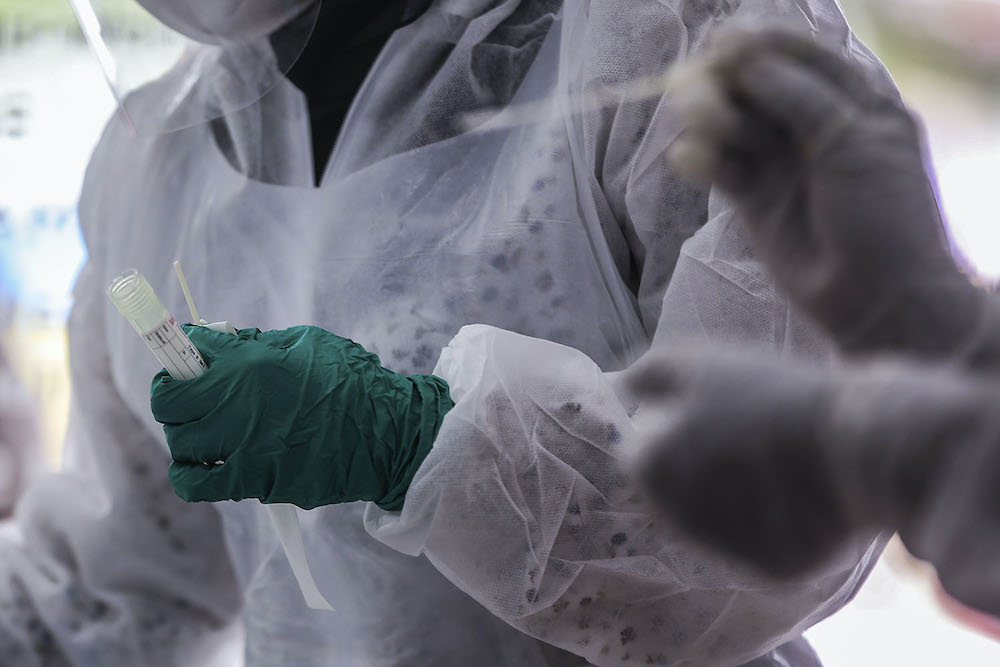APRIL 14 — Currently, the number of Covid-19 patients in Malaysia still remains in the four-digit figure.
But the possibility of a fourth wave is nearing reality despite the rolling-out of the Covid-19 vaccination programme and prohibition of interstate travel.
With the number of Malaysians registering for the vaccine still somewhat low and Hari Raya approaching, we have to strictly follow SOPs and increase public knowledge about services provided to Covid-19 patients.
One of these is at the emergency departments in hospitals.
The emergency department is an alien place to most Malaysians. It is the last place one wants to visit unless it is absolutely necessary.
A lot has changed in the emergency department since the arrival of Covid-19 and these are necessary to ensure the safety of the patients, health care workers and the rest of the public.
Apart from the changes in the layout of the different zones and improvement in infection control procedures in the treatment areas, improving identification of suspected Covid-19 infection is important to ensure the safety of other patients and health care workers.
This article explains how you can assist the emergency doctors to designate the suspected Covid-19 patient to the right area in the emergency department so that appropriate treatment can be instituted and at the same time ensure the safety of others.
The process of identifying and prioritising starts at the triage counter. “Triage” is a word derived from the French, “trier” which means “to sort out.”
During this pandemic, the person who triages — called the “triager” — will wear the necessary personal protective equipment (PPE) and ensures safe distancing from walk-in attendees.

A risk assessment for Covid-19 infection is initially executed. Patients with life-threatening or limb-threatening conditions will be identified immediately by the triager and sent to the appropriate resuscitation area.
An “eagle’s eye” view of the patient’s general condition, especially the respiratory rate or breathing pattern, is crucial to differentiate between Covid-19 and non-Covid-19 patients.
There are, however, secretive patients and relatives who refuse to disclose — whether intentionally or not — attendance of social gatherings or close contact with a Covid-19 patient.
The public is well aware of the clinical criteria of Covid-19 infection. But with the infection now in the community and the rise in asymptomatic patients, the risk assessment has to zoom in to the epidemiological criteria.
The epidemiological criteria include attendance of social gatherings or area with a cluster or close contact with a Covid-19 patient or return from abroad within 14 days of onset of illness.
Good and honest communications is expected from the patients or relatives and friends.
Once in the resuscitation or treatment area, the emergency doctor will initiate immediate assessment and treatment.
The concept of “airway, breathing and circulation” is followed strictly while assessing the “presenting complaint” or the main symptom that has caused the patient to come and seek treatment at the emergency department.
This symptom is then paired with its duration and associated symptom before another set of questions is asked. This set of questions follows the mnemonic ”AMPLE”:
A: Allergy; what is the patient allergic to, namely medication or food?
M: Medication; what medication is the patient on?
P: Past medical, surgical or relevant gynaecological history; What comorbidity (the ones that are risks to severe Covid-19) does the patient has, namely hypertension, diabetes, hyperlipidaemia, coronary heart disease, obesity, cancer, immunocompromised conditions or pregnancy
L: Last meal that the patient has consumed
E: Events leading to the presenting complaint. These are incidences which can contribute to the presenting complaint such as the epidemiological criteria, mechanism of injury and others which will be guided by the emergency doctor.
An older person (defined as an adult more than 65 years old) is also at risk of severe Covid-19 infection. Hence, it is imperative to assess the “Clinical Frailty Scale” of the older person.
This frailty or fitness assessment is used to predict the older person’s outcome from the hospitalisation. These are graded assessments based on the clinical judgement of the patient’s mobility, balance, usage of walking aids and degree of independence.
These assessments will be taken into account during the counselling session with the family members on the future care of the patient.
Hence, in conclusion, it is imperative that the patient and relatives familiarise themselves with the common questions asked in the emergency department which is done for a purpose to ensure safety to all.
* Dr Mohd Idzwan bin Zakaria is Associate Professor in Emergency Medicine at University of Malaya.
**This is the personal opinion of the writer or publication and does not necessarily represent the views of Malay Mail.





















